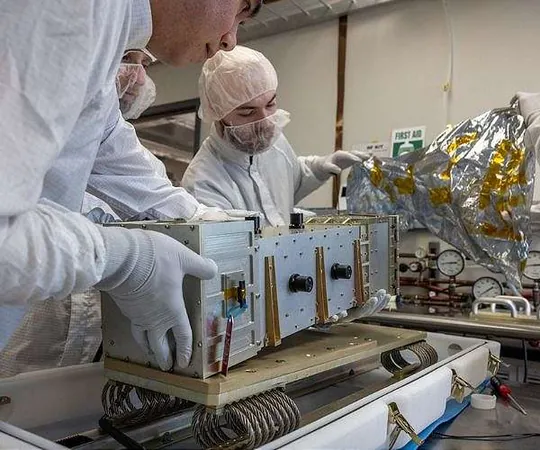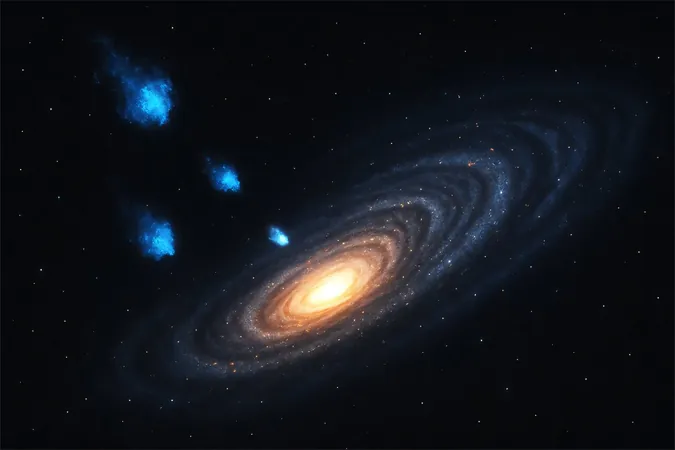
NASA's LEXI Set to Unveil Earth's Magnetosphere in Stunning X-Ray Imagery
2025-01-04
Author: Sarah
NASA's LEXI Set to Unveil Earth's Magnetosphere in Stunning X-Ray Imagery
In an exciting leap forward for space science, NASA's Lunar Environment Heliospheric X-ray Imager (LEXI) is gearing up to embark on a groundbreaking mission to the Moon. Launching as part of NASA's Artemis program, LEXI will become the first instrument to capture global images of Earth's magnetic field, which serves as a vital shield against solar radiation.
Scheduled to launch from Kennedy Space Center in Florida no earlier than mid-January 2025 aboard Firefly Aerospace's Blue Ghost Lander, LEXI is one of ten cutting-edge payloads selected for this pivotal mission under NASA's Commercial Lunar Payload Services (CLPS) initiative. This instrumental journey aims to deepen our understanding of how our planet interacts with the turbulent solar winds that shape space weather.
Upon its lunar landing, LEXI will spring into action, focusing on Earth for a continuous six-day observation period. Its impressive imaging capabilities will allow scientists to visualize the X-rays generated at the outer edges of our planet's extensive magnetosphere. This unique perspective may help clarify the magnetosphere's response to various cosmic phenomena and its ability to facilitate the entry of charged solar particles—natural occurrences that create stunning auroras while potentially threatening satellites and power grids.
"We're trying to capture the bigger picture of Earth's space environment," stated Brian Walsh, LEXI's principal investigator and a space physicist at Boston University. "This mission provides a rare opportunity to make complex scientific data visually accessible to everyone."
What sets LEXI apart is its ability to detect low-energy X-rays produced when the solar wind collides with Earth's magnetic field, particularly at the magnetopause. While researchers have previously gathered this data through multiple satellite observations, LEXI's lunar vantage point will present an uninterrupted and comprehensive view of the magnetopause, significantly enhancing our understanding of its behavior.
The mission team on Earth will meticulously track the magnetosphere's expansion and contraction in response to the solar wind's intensity. "For the first time, we expect to witness the magnetosphere breathing in and out—an exciting and dynamic process," Hyunju Connor, NASA's lead for LEXI and an astrophysicist at Goddard Space Flight Center, emphasized.
Additionally, LEXI will observe magnetic reconnection—an intriguing phenomenon where the magnetosphere's field lines merge with those of the solar wind, releasing high-energy particles that can rain down at the Earth's poles. These observations could provide insights into the mechanics of these occurrences, helping researchers understand whether they unfold steadily, in bursts, or at multiple sites simultaneously.
Beyond the captivating auroras triggered by these solar particles, there are significant implications for our technological infrastructure. Understanding these natural processes is vital for safeguarding satellites in orbit and maintaining power grids on the ground.
LEXI isn't a newcomer to space exploration. Initially crafted under the name STORM, this instrument was launched on a sounding rocket in 2012 to test its efficacy in detecting low-energy X-rays. After successfully collecting data, it was secured in a display case at Goddard Space Flight Center for a decade. With NASA's renewed interest in efficient, budget-conscious lunar missions, Walsh and his team breathed new life into the instrument, refurbishing it for its lunar adventure.
The CLPS initiative represents NASA's commitment to fostering commercial partnerships for lunar explorations, paving the way for sustainable industry growth beyond Earth. As LEXI sets out to redefine our understanding of Earth's magnetosphere, it promises to unlock a treasure trove of scientific knowledge essential for enriching our understanding of the universe.
Stay tuned as NASA prepares to revolutionize our cosmic view—the data collected by LEXI could change the way we perceive the deep connections between our planet and the sun!



 Brasil (PT)
Brasil (PT)
 Canada (EN)
Canada (EN)
 Chile (ES)
Chile (ES)
 Česko (CS)
Česko (CS)
 대한민국 (KO)
대한민국 (KO)
 España (ES)
España (ES)
 France (FR)
France (FR)
 Hong Kong (EN)
Hong Kong (EN)
 Italia (IT)
Italia (IT)
 日本 (JA)
日本 (JA)
 Magyarország (HU)
Magyarország (HU)
 Norge (NO)
Norge (NO)
 Polska (PL)
Polska (PL)
 Schweiz (DE)
Schweiz (DE)
 Singapore (EN)
Singapore (EN)
 Sverige (SV)
Sverige (SV)
 Suomi (FI)
Suomi (FI)
 Türkiye (TR)
Türkiye (TR)
 الإمارات العربية المتحدة (AR)
الإمارات العربية المتحدة (AR)